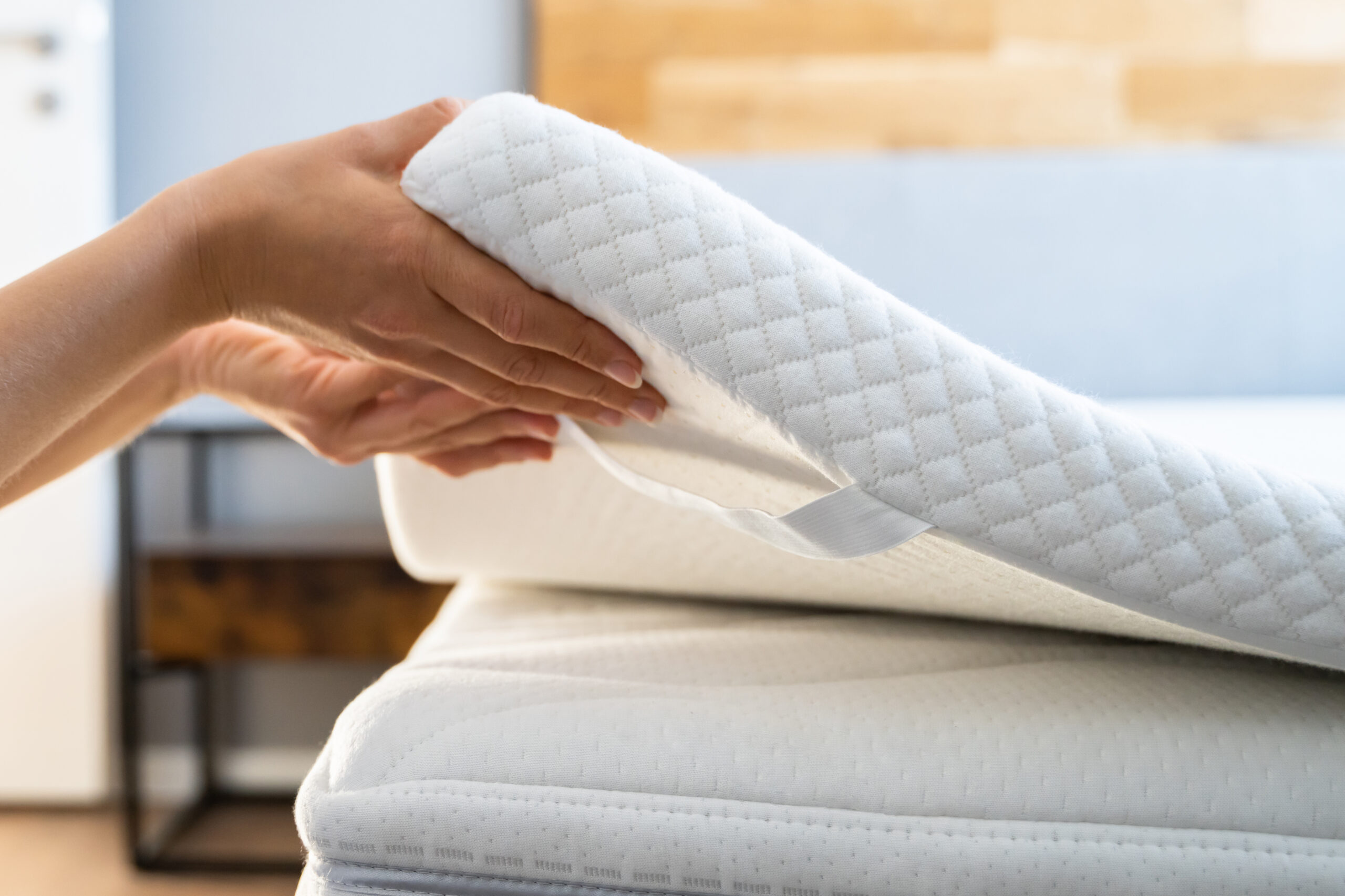
How to Fix a Saggy Mattress
A saggy mattress feels like you’re sleeping in a hole. It can make you toss, turn and wake up sore. It can even ruin your bed’s support. The good news is you can often improve a saggy mattress at home. When the dip is small, simple fixes like adding a mattress topper or turning your bed can help. If the sag is big, it might be time to check your warranty or replace the mattress. This guide shares easy steps to make your bed feel fresh again.
Why do mattresses sag?
- Materials wear down. Foam, latex and even springs soften and lose bounce after years of holding your weight. Over time this can create soft spots that feel like dips.
- Uneven support. Bases with few legs, widely‑spaced slats or worn‑out box springs don’t hold the mattress evenly. Poor support makes the bed sag faster.
- Sleeping in the same spot. Lying in the same area night after night compresses the materials under your hips and shoulders. That extra pressure causes sagging in the middle of the bed.
Can you really fix a saggy mattress?
The experts at the Sleep Foundation say that you can’t truly “fix” a sagging mattress — only the manufacturer can repair it. But you can use simple tricks to minimize the effects of sagging and make your bed more comfortable. Below are gentle steps you can try at home.
1 – Add a mattress topper
A mattress topper is a separate layer of foam, latex or feathers that sits on top of your mattress. Toppers are 2‑5 inches thick; thicker, denser toppers make the surface feel more even. A good topper smooths over dips and gives extra cushion. It won’t fix the sag inside the bed, but it’s an affordable, quick way to improve comfort.
Tip: When shopping for a topper, look for high‑density foam or latex. It holds its shape better than soft, thin materials. Our friends at Ex Mattress can help you find the right topper for your bed.
2 – Rotate the mattress
Turning the mattress so the head becomes the foot helps spread out wear. Sleep Foundation recommends rotating the bed every three to six months. This moves heavy body parts (hips and shoulders) to fresher areas of the mattress and can lessen a saggy spot. Remember not to flip the mattress unless the manufacturer says it’s double‑sided.
3 – Check the bed’s foundation
A weak base is a common cause of sagging. Foundations with fewer than six legs or slats that are far apart leave parts of the mattress unsupported. Old box springs also wear out. To improve support:
- Inspect the frame. Make sure there are enough legs in the middle and that slats are close together.
- Add plywood. Placing a sheet of plywood between the mattress and the slats can improve support temporarily.
- Upgrade the base. Consider switching to a sturdy platform bed or a box spring that fits your mattress type.
- Ask the maker. Many manufacturers specify the minimum slat spacing required for warranty coverage.
4 – Use pillows wisely
Some sleepers tuck a pillow under the sagging area to raise it. The Sleep Foundation notes that using pillows on top of the bed for extra support under your hips, back or knees is fine, but putting pillows under the mattress isn’t recommended because it blocks even support and can damage the bed. Choose pillows that keep their shape so they don’t flatten out quickly.
5 – Check your warranty
If the mattress is still within its warranty period, inspect the terms. Many warranties cover deep indentations (often 1–1½ inches or more). If sagging is a covered issue, the manufacturer may repair or replace your mattress. Keep your receipt, note any dips and contact the retailer or manufacturer for help. This can save you money on a new bed.
Prevent future sagging
It’s easier to prevent sagging than to fix a big dip. Here are some friendly tips:
- Choose quality materials. High‑density memory foam, latex and good coil systems last longer. Cheaper foams often sag sooner.
- Rotate regularly. Keep turning your bed every few months to avoid permanent body impressions.
- Use the right base. A supportive frame with plenty of legs and close‑set slats prevents the mattress from bending.
- Avoid sitting on edges. Constantly sitting on the side compresses the border and can lead to sagging. Sit on a chair or bench instead.
- Keep kids and pets from jumping on the bed. Excessive jumping breaks down springs and foam faster.
- Replace when needed. Most mattresses last 7–10 years. If your bed still sags after trying these tips, it may be time for a new one. Be sure to dispose of your old mattress properly; Ex Mattress’s mattress disposal guide shows how to recycle or donate responsibly.
When to replace your mattress
Sometimes a saggy bed is past saving. Consider getting a new mattress when:
- The dip is deeper than 1–1½ inches and you wake up sore every day.
- You’ve tried a topper, rotation and better support with no improvement.
- Your mattress is older than 8 years. Foams break down and springs lose tension over time.
- You notice squeaking coils, broken slats or a torn cover.
Upgrading to a high‑quality, supportive mattress can improve your sleep and health. Look for brands with generous warranties and strong support systems. Ex Mattress carries several mattresses designed not to sag.
Quick reference table
| Method | What it does | Best for |
|---|---|---|
| Mattress topper | Adds extra cushioning over sagging spots; can hide small dips | Beds with minor sagging or budget fix |
| Rotate mattress | Moves wear to different areas to extend life | All mattress types (unless manufacturer says otherwise) |
| Improve foundation | Provides even support so mattress materials don’t bend | Mattresses on weak frames or slatted bases |
| Strategic pillows | Gives extra support to hips, back or knees | Temporary relief for sore spots; avoid placing pillows under the mattress |
| Warranty check | Allows repair or replacement if sagging is covered | Newer mattresses still within warranty |
Final thoughts
A saggy mattress doesn’t have to ruin your sleep. Simple fixes like adding a topper, rotating the bed and ensuring proper support can make a big difference. Remember that mattresses wear out with time; if your bed still sags after trying these tips, it may be time to invest in a new one. For more advice on mattress care and choosing the right bed, check out the helpful guides at Ex Mattress and reliable resources like the Sleep Foundation.






